The month of Fallas has just begun! They call it the festival of fire, but Fallas is much more than just fire. Before the night when everything burns -la Nit de la Cremà (Night of the Cremà)- the city experiences an authentic street spectacle for ten days unlike many others celebrated in Spain. With it, they achieve something very difficult: visitors feel as if the celebration belongs to them as well. Colossal satirical figures, firecrackers that make the ground shake, fireworks that light up the darkest sky, troupes that bring the street to life from daybreak, and of course, fire, lots of fire. If you want to live Fallas in person, there are ten important things that you should keep in mind.
1. The origin of the festival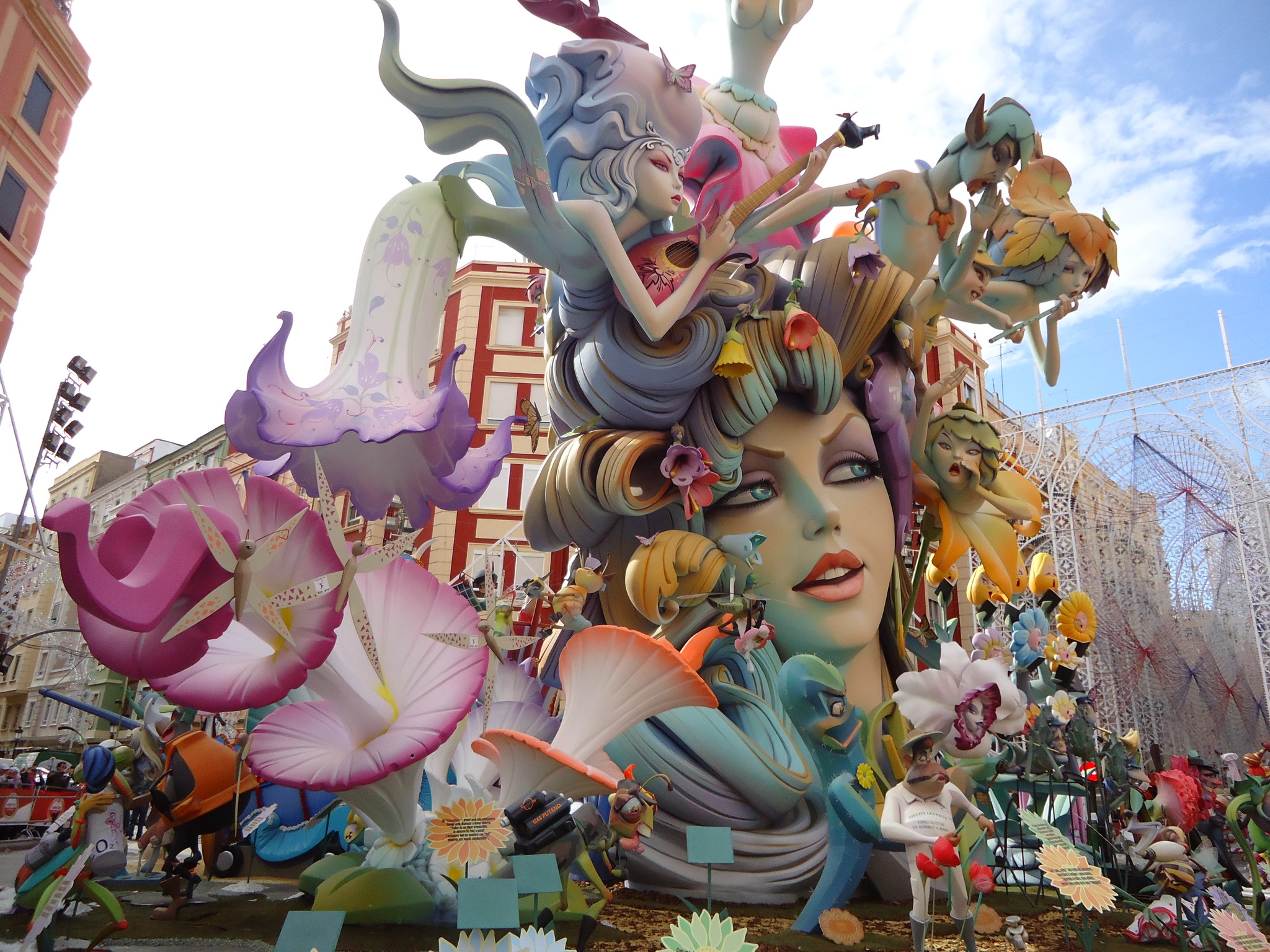
There are many theories and none of them 100 % provable. The most common theory is that the origin is in the city's carpenters' guild: that on the eve of the patron saint's day on March 19th, they burned outside their workshops the "parot," the post that supported the oil lamp for working at night. They added a lot of scraps to this "parot" and from this came the modern Fallas festival. What's undeniable is that it's a historic festival; the first written documentation about Fallas dates back to the 18th century.
2. Its own language
If you don't want to look like a tourist, take a look at the Fallas jargon. Although the festival as a whole is called Fallas the word “falla” actually refers to the monument. The plantà is the act of setting up and raising the falla. The ninot is the human figure of the falla. The cremà is the moment that the fallas are lit. The mascletà is the pyrotechnics spectacle in which hundreds of fireworks are set off, the most deafening of which is the one at the city hall.
3. Comfortable footwear and a fallas map
Each year around 700 fallas are set up in Valencia so if you want to enjoy art and sarcasm that abound, you'll need a fallas map -available in all tourism offices- and some comfortable shoes. As it's almost impossible to see all of them, make sure to plan on seeing at least the most spectacular ones, which are included in the Special Section (presented on March 16). The ones at the City Hall, the Convent and the el Pilar plaza never disappoint.
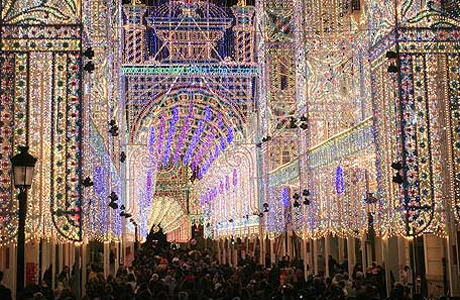 4. Not only the fire illuminates
4. Not only the fire illuminates
Before the fire illuminates the city on the Nit de la Cremà, Valencia shines at night from the lights that the Fallas committees place in the streets. The installations are so impressive that some streets are reminiscent of the famous Seville Fair. Thousands of coloured light bulbs adorn the streets creating authentic spectacles of light. Traditionally it's the Ruzafa neighbourhood where we can see the most magnificent lights.
5. Exhibition of the Ninot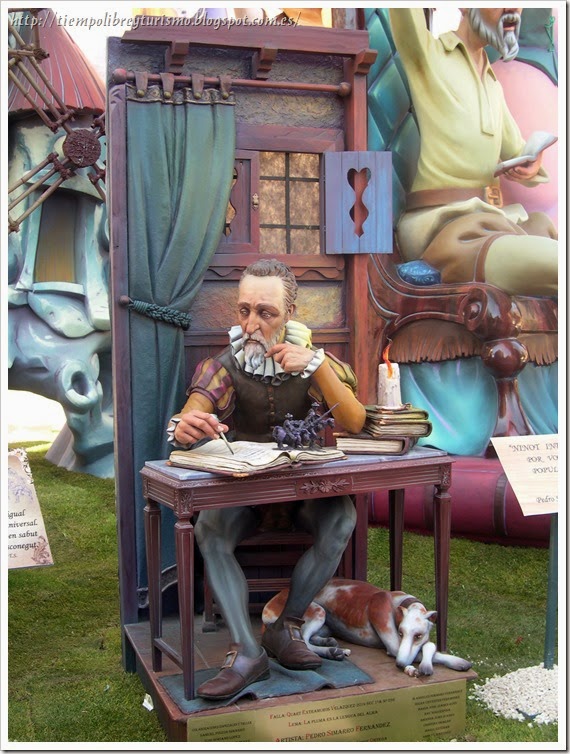
Before the fallas are set up in the street (on 16 March) we can have a taste of these works of art by visiting the Exhibition of the Ninot. It includes a ninot from each Fallas committee, which allows us to get an accurate idea of the quality of the fallas that will be shown that year. Among all the ninots shown, those rated highest will be saved from burning.
6. The night doesn't sleep
Although going out looking for the best fallas and participating in the many activities organized in the city will leave us exhausted, we have to save some energy for the night because, after the fireworks, music begins to play and doesn't stop until sunrise. In addition to the open-air dances that the Fallas committees organize, the City Hall organizes concerts with top groups from the music scene, held in the are around the old Turia riverbed.
7. The despertà
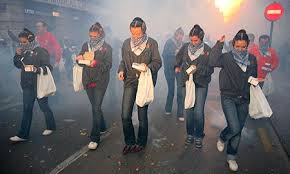 Although little sleep is had during Fallas, the alarm sounds early thanks to the despertàs. This tradition consists of going through the neighbourhoods with a music band and firecrackers; nothing special if it weren't for the fact that they do it at 8 in the morning. It's one of the acts that full-blooded "falleros" (Fallas festival-goers) like most but that the visitors hate, especially those who go all out at night. Maybe packing some earplugs isn't such a bad idea...
Although little sleep is had during Fallas, the alarm sounds early thanks to the despertàs. This tradition consists of going through the neighbourhoods with a music band and firecrackers; nothing special if it weren't for the fact that they do it at 8 in the morning. It's one of the acts that full-blooded "falleros" (Fallas festival-goers) like most but that the visitors hate, especially those who go all out at night. Maybe packing some earplugs isn't such a bad idea...
8.Fire Parade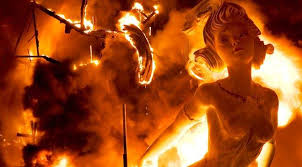
It's one of the most impressive events of the entire festival, so we should take special note on our plans. It's held on March 19 and is the prelude to the famous Nit del Foc (Night of Fire), when all the fallas burn. It's a parade that combines music with dancers and, evidently, fire, carried by the so-called demons. Only a couple hours afterwards the flames take the city, making ash of the fallas that have decorated the city for days.
9. Floral offering
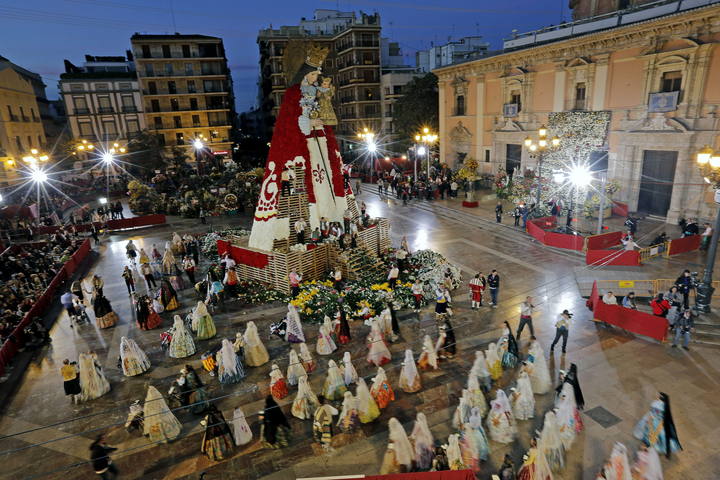
Between the fire, the music and the pyrotechnics, there is a moment of calm to organize some of the nicest and remarkable moments of the festival, the offering of flowers to the Virgen de Los Desamparados (Our Lady of the Forsaken). This event is spectacular in that hundreds of falleros and falleras carry flowers, wearing the typical clothing and accompanied by musical parades. For almost two days these flowers are placed to cover a replica of the Lady, known as the "Geperudeta," nearly 15 meters tall.
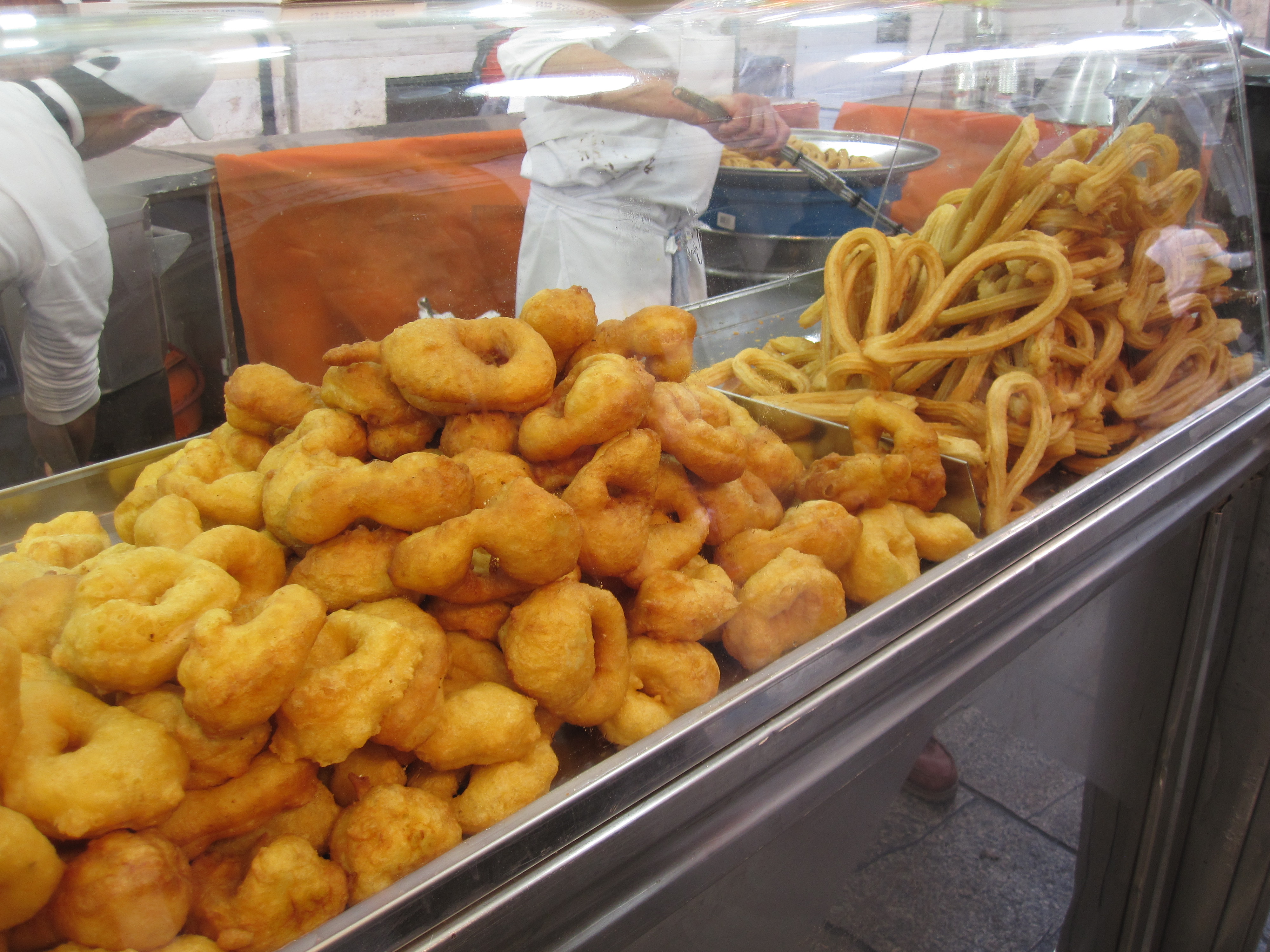
10. Food!
Even if our feet are really suffering from walking and dancing during the festival, some of the most fun we'll have is eating the traditional doughnuts with hot chocolate and the famous paella, which is always a treat for our palates.